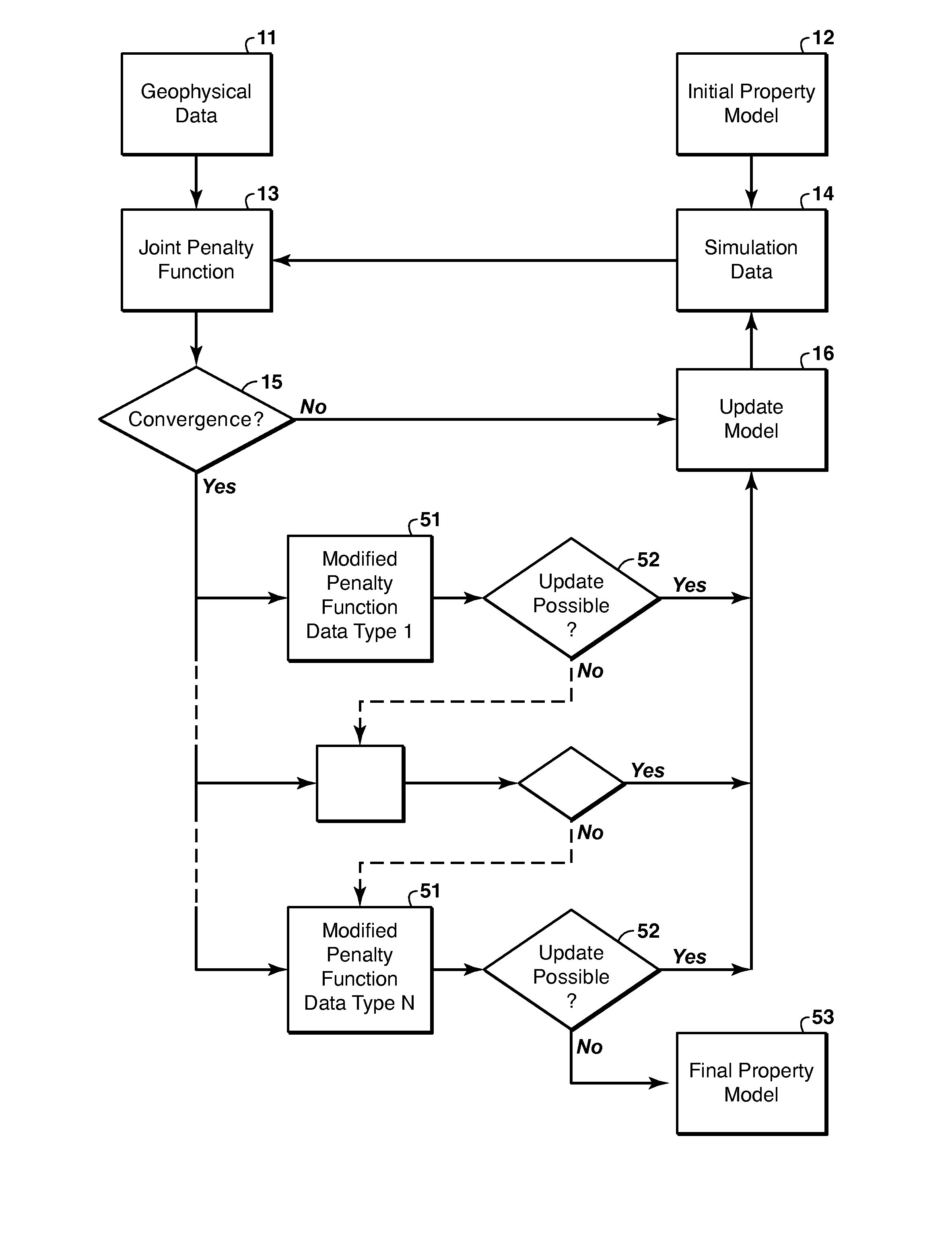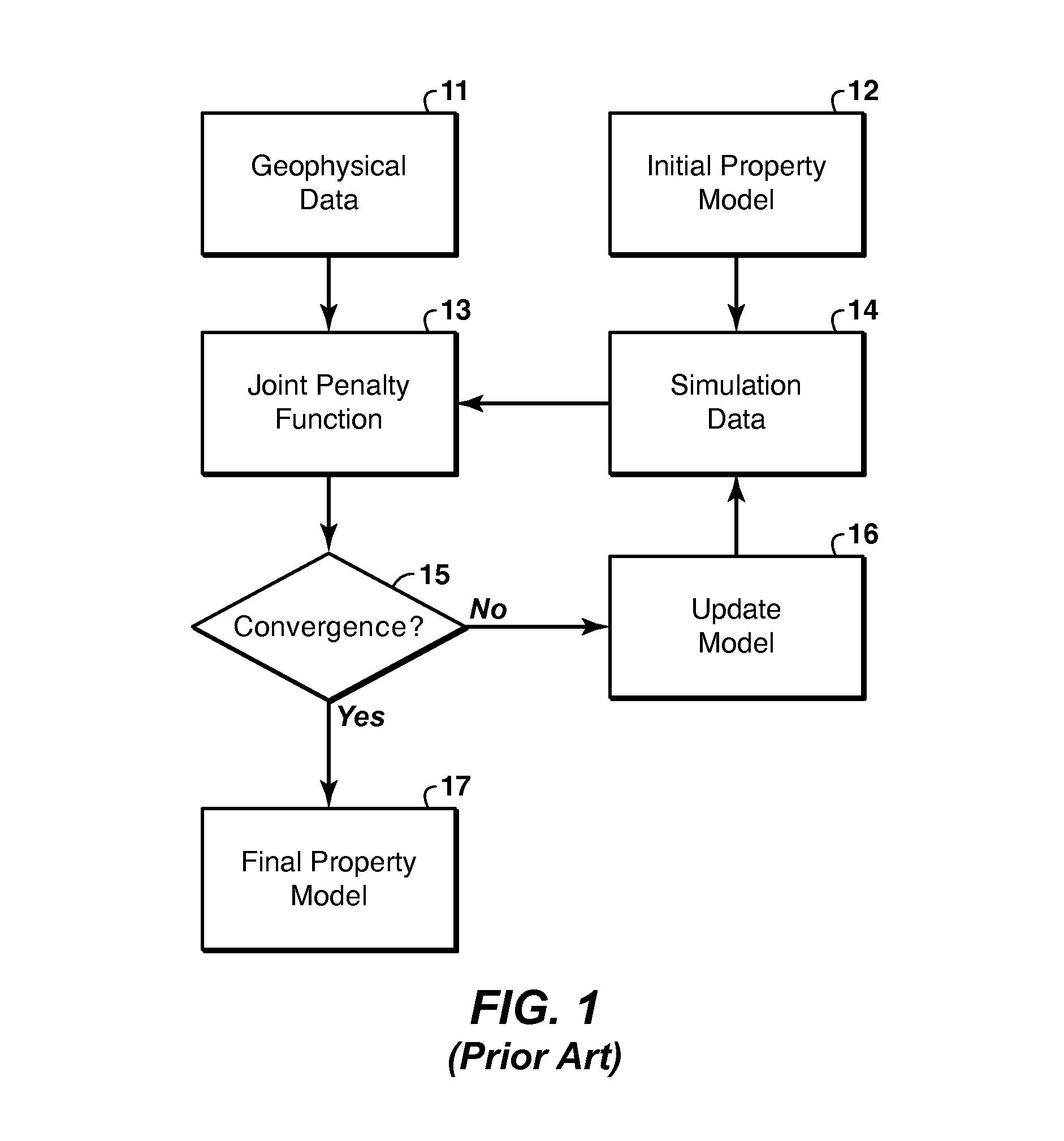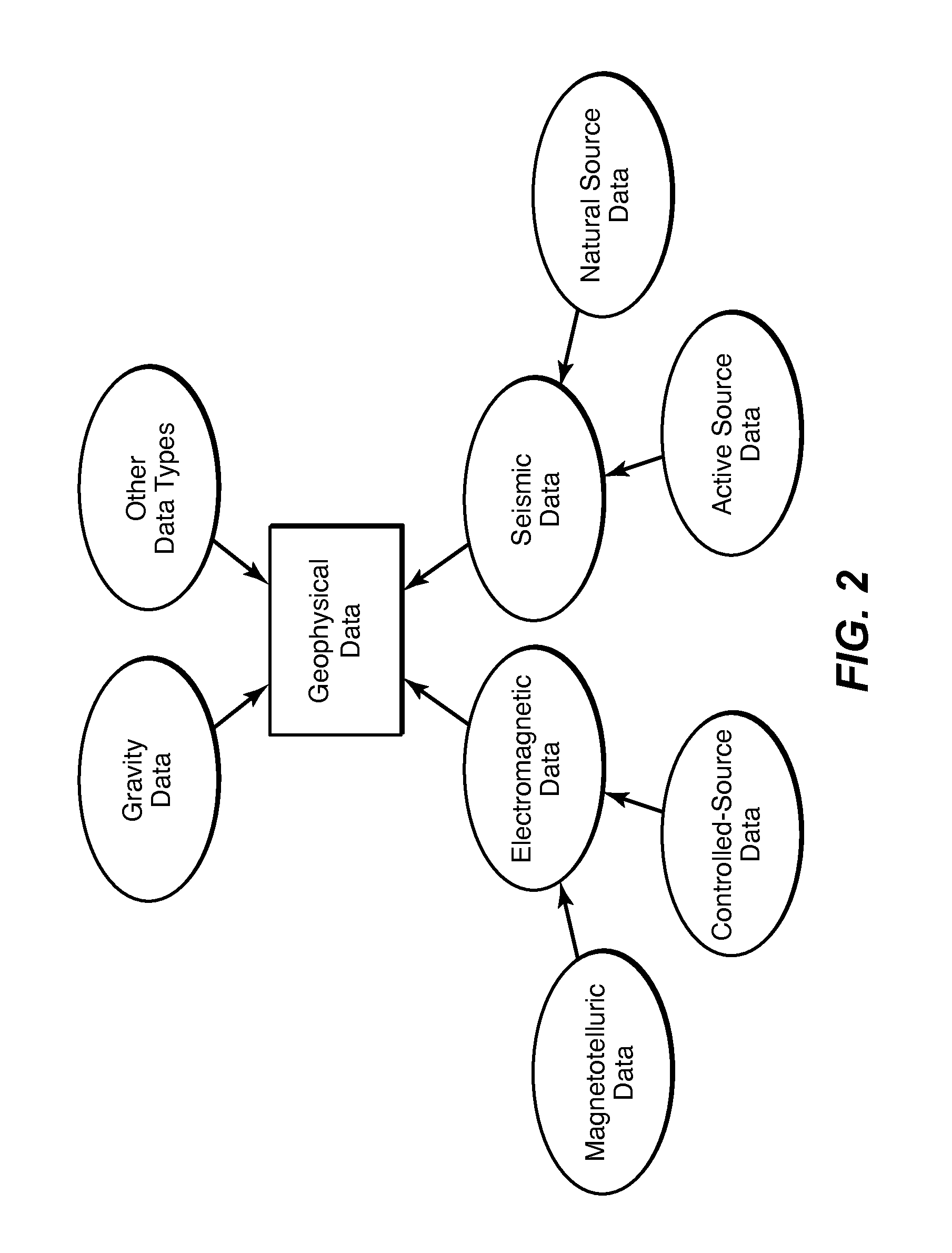Adaptive Weighting of Geophysical Data Types in Joint Inversion
- Summary
- Abstract
- Description
- Claims
- Application Information
AI Technical Summary
Benefits of technology
Problems solved by technology
Method used
Image
Examples
Embodiment Construction
[0029]FIG. 5 provides an overview of how the present invention can be incorporated into a typical joint inversion methodology such as that outlined in the flowchart of FIG. 1. The inversion proceeds according to FIG. 1 until convergence has been reached. This superposition in FIG. 5 of additional steps from the present invention onto the traditional steps in FIG. 1 is emphasized by repeating the FIG. 1 reference numbers for those traditional steps. At this point, i.e. achieving a “yes” result in step 15, in a conventional joint inversion, it is not determined whether the solution is in a local minimum (failed convergence) or the global minimum (final property model). One merely hopes that the process has converged at the global minimum.
[0030]Convergence criteria of the present inventive method may be as simple as tolerances on minimum change in misfit values, for a particular data type or the combined misfit function, from one iteration to the next. If the change in misfit values is...
PUM
 Login to View More
Login to View More Abstract
Description
Claims
Application Information
 Login to View More
Login to View More - R&D
- Intellectual Property
- Life Sciences
- Materials
- Tech Scout
- Unparalleled Data Quality
- Higher Quality Content
- 60% Fewer Hallucinations
Browse by: Latest US Patents, China's latest patents, Technical Efficacy Thesaurus, Application Domain, Technology Topic, Popular Technical Reports.
© 2025 PatSnap. All rights reserved.Legal|Privacy policy|Modern Slavery Act Transparency Statement|Sitemap|About US| Contact US: help@patsnap.com



